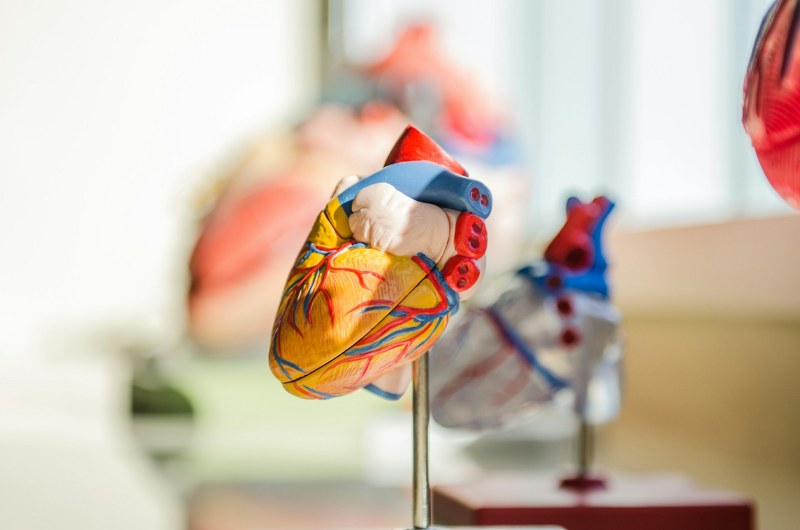 CHD
CHD
Late presentation of CHD multifactorial, its common reasons include financial constraint, lack of awareness: Cardiac surgeon
Kolkata/IBNS: Late presentation of congenital heart disease (CHD) is very common in low and middle income countries due to multiple reasons, according to a Kolkata-based cardiac surgeon.
Here, “late” means delayed presentation beyond the appropriate age of intervention or surgical repair as per guidelines.
Kuntal Roy Chowdhuri, pediatric and adult cardiac surgeon with Kolkata's BM Birla Heart Research Centre, said upto 85 percent CHD presents late in low and middle income countries compared to 8-29 percent in developed countries, and even 10-15 percent CHD are first diagnosed in adulthood.
The senior cardiac surgeon said late presentation of CHD is multifactorial, and financial constraint and lack of awareness are common reasons for late presentation.
"Other factors such as late diagnosis, ignorance, late referral and fear about cardiac ailments are also contributory," he said.
Late presentation of different CHD has various untoward consequences and it complicates decision making, surgical repair or intervention and postoperative recovery.
It may even cause irreversible damage in the long term and even death.
CHD with left to right shunts (i.e Ventricular Septal Defects, Patent Ductus Arteriosus, Aortopulmonary window) which are also known as ‘hole’ in the heart are very common.
If these holes are not diagnosed and repaired at proper time, it may cause severe rise of lung pressure (Pulmonary Hypertension).
Pulmonary hypertension poses a unique challenge during operability assessment, surgical planning, postoperative recovery and long term outcome.
It is heartbreaking to witness patients having simple CHD develop inoperable pulmonary hypertension and experience premature death even today in India.
On the flip side, children with cyanotic heart disease may suffer from inescapable hazards of polycythemia and hypoxia which includes headache, stroke, brain abscess, venous thrombosis and cyanotic cardiomyopathy and nephropathy.
Timely correction of cyanotic CHD can offer a better quality life with proper development of organs.
Children with single ventricle physiology are the most delicate subset who demand early intervention to protect their single ventricle candidacy.
Late presentation also attributes to severe malnutrition, repeated chest infection and heart failure which appends clinical and financial morbidities.
The cardiac surgeon said it is absolutely important to emphasize on early diagnosis and timely treatment of CHD to avoid deleterious complications of late presentation.
Multifaceted approach is crucial which includes awareness of public and physicians at community level, financial support for treatment and early diagnosis and referral.
Early diagnosis can be achieved by Fetal Echocardiography, pulse oximetry screening and availability of echocardiography.
Common symptoms of CHD include bluish discoloration of lips and fingertips, ‘suck-rest-suck’ cycle, repeated chest infection, failure to thrive, shortness of breath on exertion and palpitation.
Parents shouldn’t ignore these and should get their child evaluated properly.
Treatment of CHD may include intervention with device closure, surgical treatment or medical management.
In the past few decades, tremendous advancement has taken place in the field of congenital and paediatric cardiac care.
As a result, early and late outcomes of all simple and complex heart disease have improved significantly.
According to the cardiac surgeon, if treated timely, simple and complex heart diseases can be surgically corrected with about 2-5 percent and 10-15 percent mortality risk, respectively.
Many simple and complex CHD may lead almost normal life if treated timely.
Activity restriction after CHD surgery is only required in selected high-risk patients and should not be generalised.
Social life including pregnancy is possible in most corrected biventricular CHD patients but demands careful pre-conceptional evaluation.
Nevertheless, CHD patients should adhere to follow-up visits as advised by the doctors.
Misconceptions among the public and physicians regarding CHD symptoms, availability of treatment options and short and long term outcome need to be addressed aggressively.
The cardiac surgeon said timely treatment is the cornerstone of CHD treatment. Everyone should understand that a baby born with some critical CHD [Obstructed Total anomalous pulmonary venous connection] might need intervention or surgery even at a few hours of life.
Support Our Journalism
We cannot do without you.. your contribution supports unbiased journalism
IBNS is not driven by any ism- not wokeism, not racism, not skewed secularism, not hyper right-wing or left liberal ideals, nor by any hardline religious beliefs or hyper nationalism. We want to serve you good old objective news, as they are. We do not judge or preach. We let people decide for themselves. We only try to present factual and well-sourced news.






